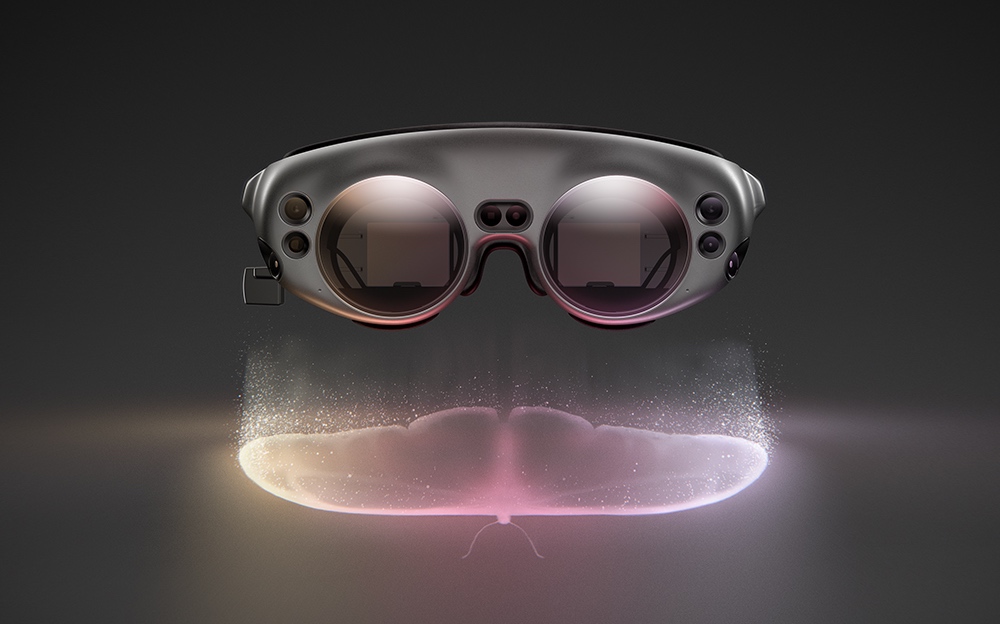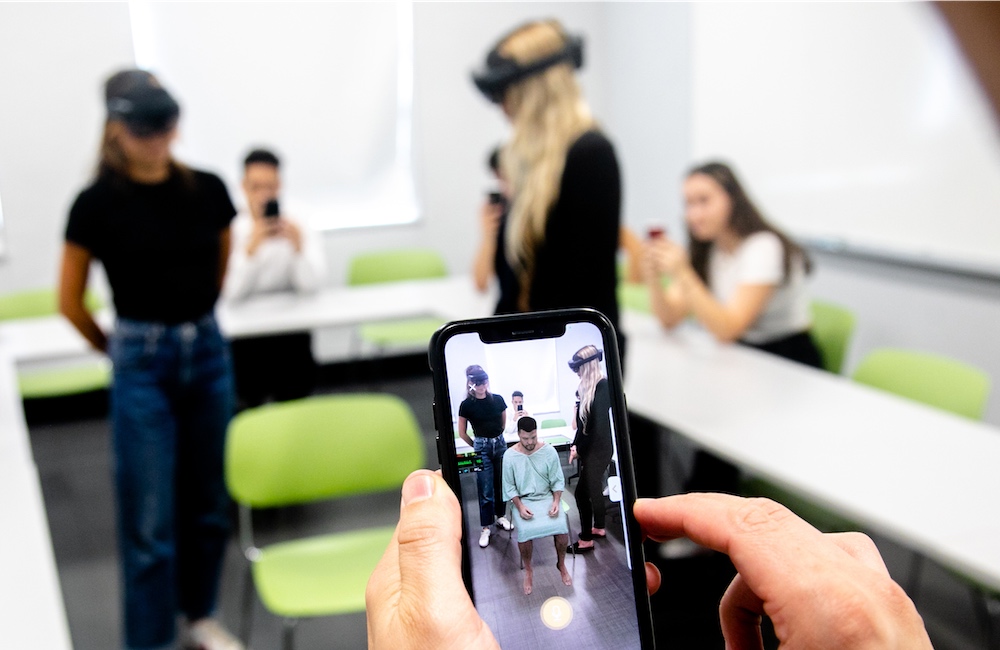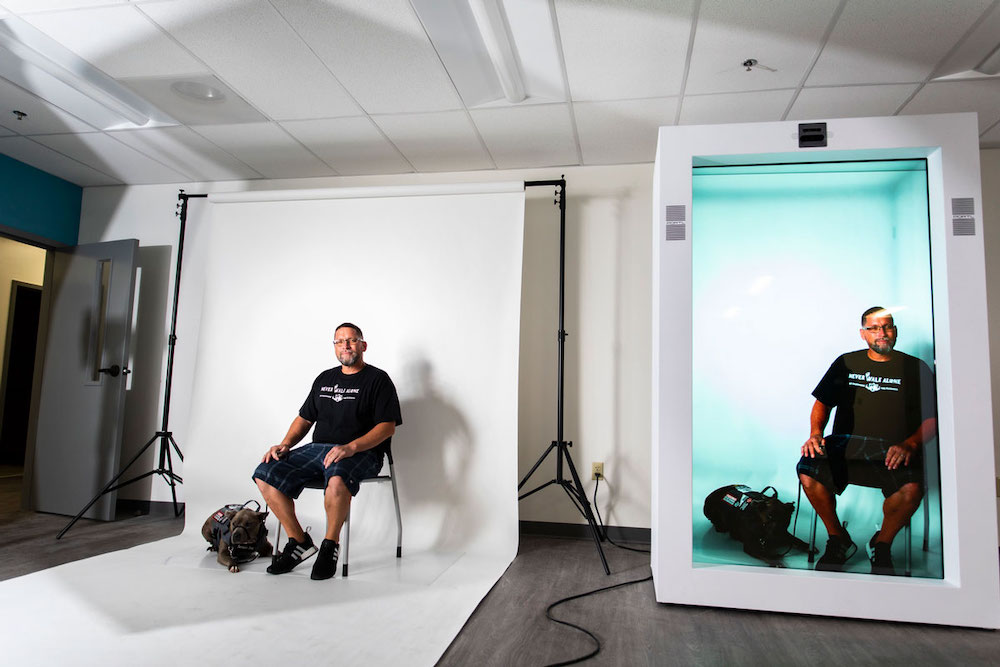Magic Leap is an augmented reality (AR) company that works to amplify human potential through a transformational impact on professional productivity. According to Business Insider, Magic Leap cut half the company’s workforce in late April 2020 and decided to focus solely on enterprise applications. Since then, the company’s board appointed Peggy Johnson as the new CEO, and speculation has grown that the company may recently have signed a terms sheet with a major health company — potentially leveraging greater impact on the clinical simulation community.
Such an investment could provide Magic Leap with the lifeline needed to progress toward more healthcare-focused AR applications. In a 2020 Business Insider article, the platform shared that “the unnamed health company reportedly plans to use Magic Leap’s AR headsets for surgical procedures and healthcare professional training.”
Also relating to the company’s future endeavors, during a VivaTech event in 2021, VentureBeat reported that Johnson announced the impending launch of the Magic Leap Two device later in 2021. According to VentureBeat, she said this technology will be about half the size of Magic Leap One (about 20% lighter), and the solution will have about three to four times the processing power. Additionally, the rendering and images are extremely high-fidelity, the report states.
During her interview with VentureBeat, Johnson told reporter Dean Takahashi that upon her arrival at Magic Leap, her focus became to work on a few areas of enterprise — healthcare, manufacturing, and the public sector. She also shared the following about the upcoming release of the Magic Leap Two:
“The first generation was built to be a consumer device. In some ways it didn’t quite hit that market, but largely because it’s a larger device. There wasn’t a lot of content for it. So how do we do things differently with Magic Leap Two? We’ve made a smaller device, an all-day wearable. It improved on the metrics that our enterprise customers were asking us for — smaller, lighter, faster, cheaper. But the more important thing is that the ecosystem around it, the community of apps, is very different from the consumer clearly — a lot of those applications and the devs already have a knowledge of AR. They understand what integrating into an AR platform can do to supercharge their apps. We’ve been working with a number of ISVs and we’ll continue to build that community leading up to the launch of Magic Leap Two.”
Magic Leap AR Solutions
Vuforia Engine by PTC: Vuforia Engine offers the advanced technology needed for companies to differentiate the way they sell and market. Build engaging 3D product demonstrations, interactive brand campaigns, or create applications for customers to view and personalize products in their own homes. Augmented reality connects people to products through experiences that drive revenue and brand recognition.
Manifest by Taqtile: Manifest is an AR work instruction tool that helps train and upskill your workforce, wherever they may be. Workers learn by doing, with step-by-step guidance, augmented directly over the equipment they’re working on. Manifest takes full advantage of extremely low-latency, high-availability networks to deliver key information and video communications in real time. Manifest is available for HoloLens 1, HoloLens 2, Magic Leap, iPad, Android and browsers.
Mixed Reality Viewer from Brainlab: With this solution, users can release patient images from the confines of flat screens and take them into the real world. They can also gain access to deeper insights with a combination of Mixed Reality Viewer software and dedicated viewing hardware. With a glance, the room is digitized for spatial computing, and images are transported from Elements Viewer software on-screen into the room in front of the user with the help of Magic Leap spatial computing platform.
EON-XR Platform by EON Reality: Whether in a classroom, industrial or corporate scenario, EON-XR can supplement or replace traditional training and education methods by introducing user-friendly immersive lessons and content. With an ever-growing roster of locations across six continents, EON Reality’s global network ensures that clients and customers can always get the help they need without traveling halfway around the world.
Talespin by Talespin: The Talespin platform offers skills insights and immersive learning as a guide for individual career paths and talent development. Based on the concept of skill mobility, or the idea that through Agile learning and validated skills people can unlock highly adaptable skill sets, the Talespin platform delivers rapid reskilling and upskilling for individuals, and workforce transformation for organizations.
Immerse by Arvizio: Arvizio Immerse 3D provides a suite of AR/MR capabilities to optimize and share complex 3D models and point clouds on multiple types of headsets and mobile devices. Immerse 3D also allows documents, images and other project data to be included in the mixed and augmented reality experience without requiring the development of custom application software.
Cavrnus Spaces by Cavrnus Inc.: Cavrnus, the most versatile spatial collaboration technology available, enables enterprise leaders to empower their people through unparalleled awareness, focus and reasoning to grow together as teams. The result is clearly better decision-making.
Other Magic Leap solutions include:
- Spatial by Spatial Systems
- Sphere by holo|one
- Catapult by makeSEA
- SeeSignal by BadVR
- Flow by Flow Immersive
- MARS by Unity
More About Magic Leap
Founded in 2010 by Rony Abovitz, Magic Leap started out as a comic book company, and now is a spatial computing company that blends technology, physiology and creativity to reveal worlds within the world and “add magic to the everyday.” Today, the company’s mission is to deliver enterprise a powerful tool for transformation — an augmented reality platform of great utility and simplicity. With over eight years dedicated to addressing the fundamental challenges of providing a large field of view in an ergonomic form factor, Magic Leap works with business leaders today to bring augmented reality solutions to their industries:
- Health
- Defense & Public Sector
- Manufacturing
- Oil & Gas
- Automotive
- Transport
- Architecture, Engineering & Construction
As an example of the power of the company’s technology, surgeons at UC Davis Children’s Hospital used Magic Leap technology to help plan for the separation of rare, craniopagus twin babies. 3D reconstructions of MRI and CT scans were uploaded and viewed on the Magic Leap 1 headset using Mixed Reality Viewer from Brainlab.
A more recent addition to the company’s solutions, the Magic Leap Mobile App connects experiences on your Magic Leap device with everyday devices, workflows, and data over Wi-Fi or Bluetooth. Users can employ the device as a second control. The app is available for Android and iOS devices, and allows users to find their recommended Magic Leap device size, and to use their mobile device as a second control and to enter text on Magic Leap. The app can also transfer media between mobile and Magic Leap devices, and can be used to manage a Magic Leap account.








